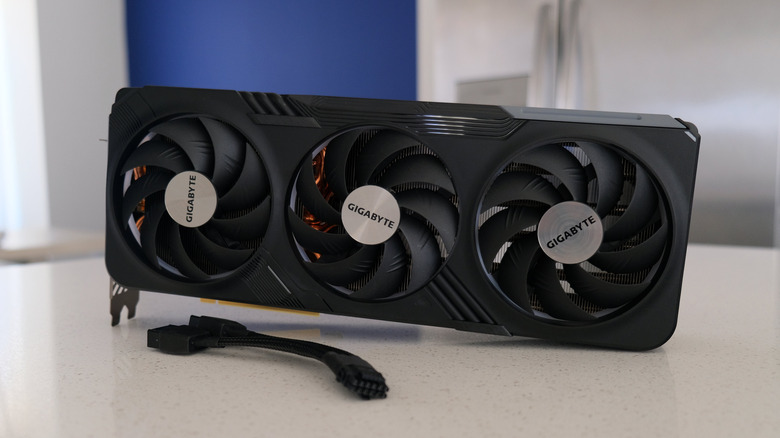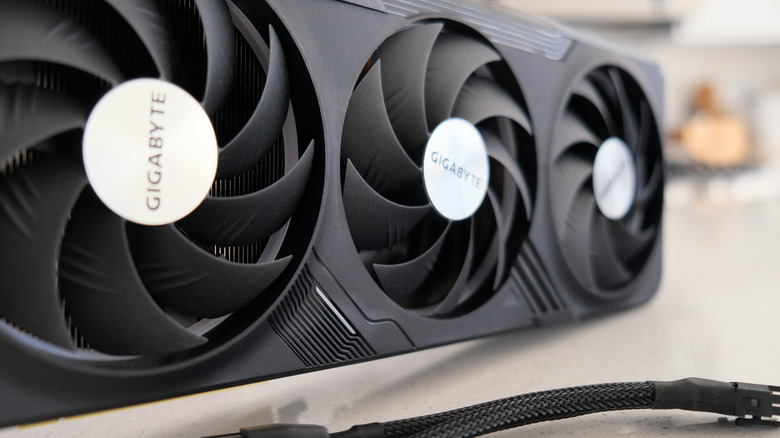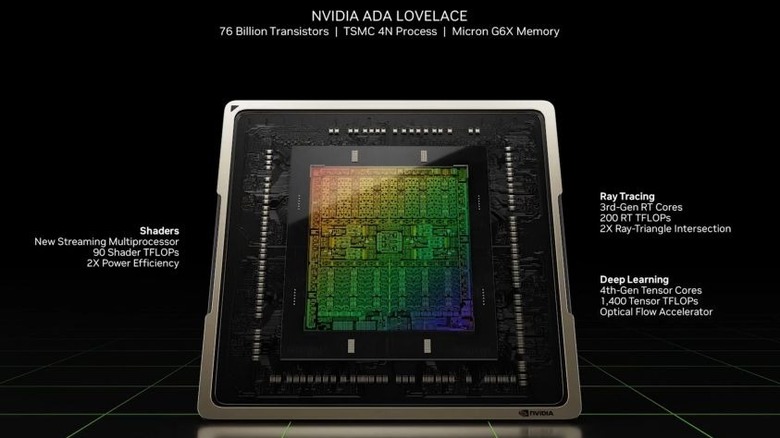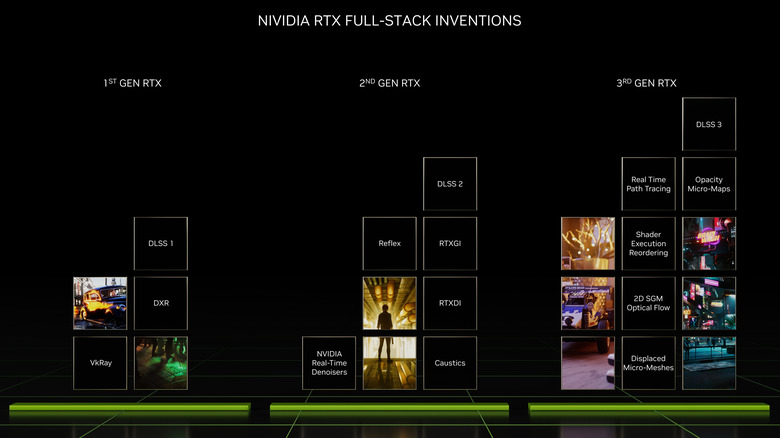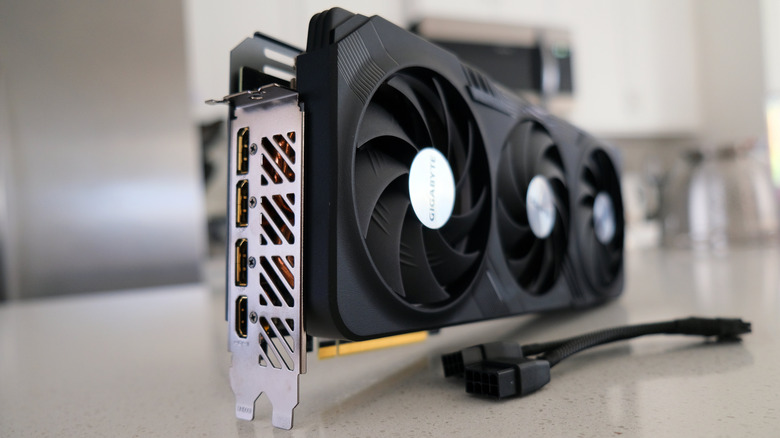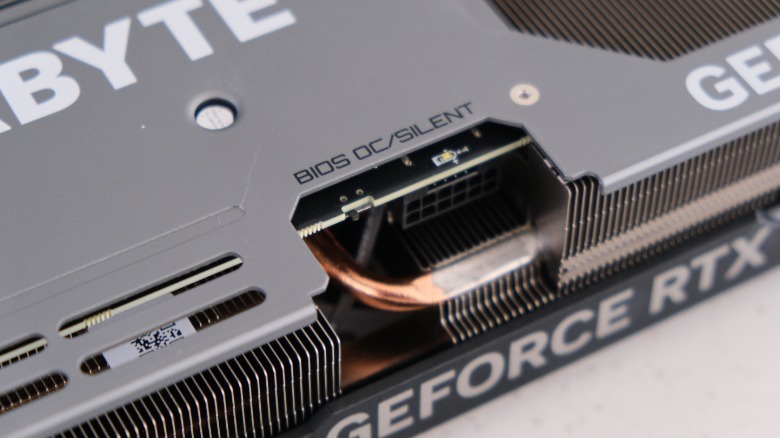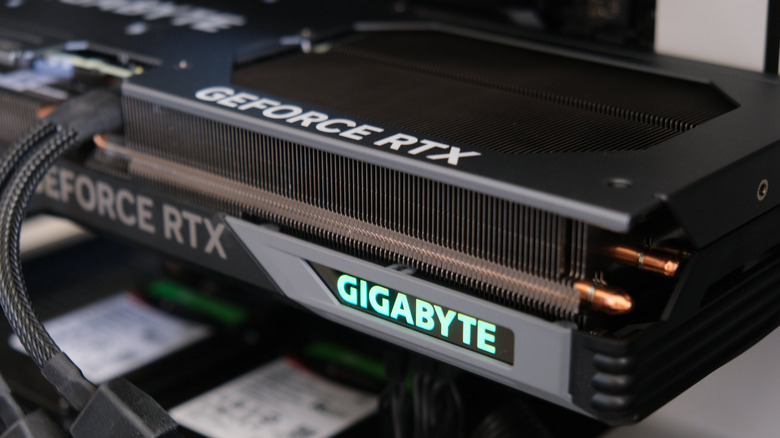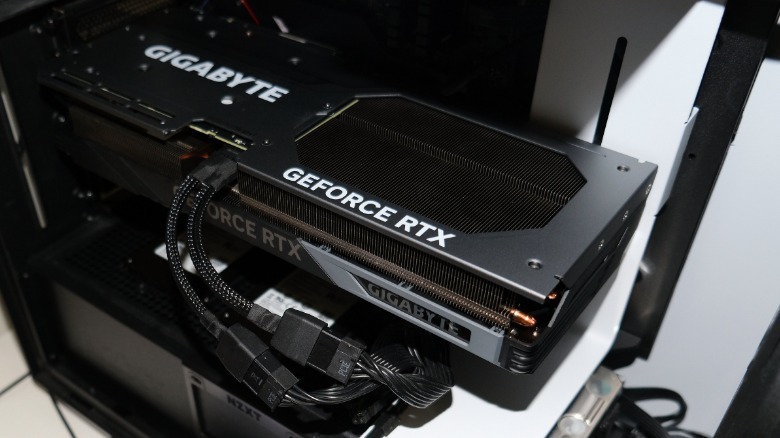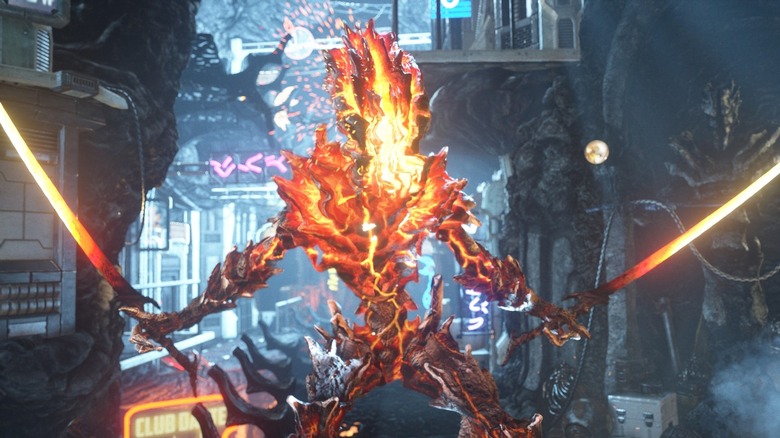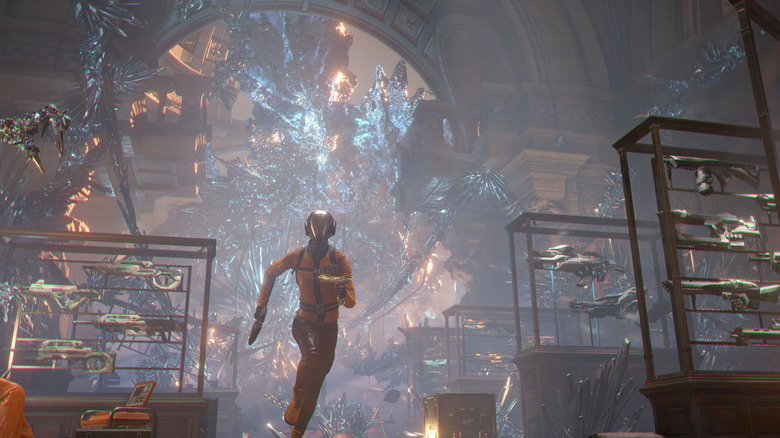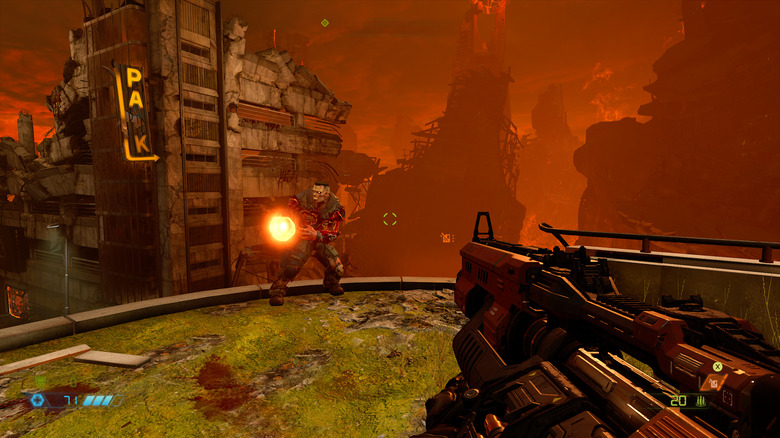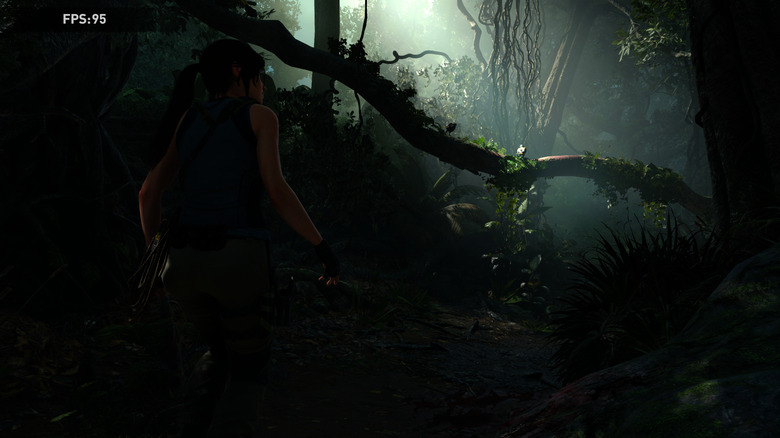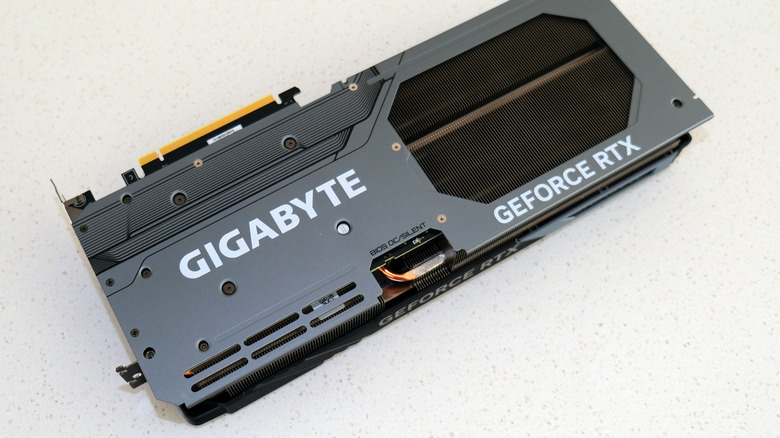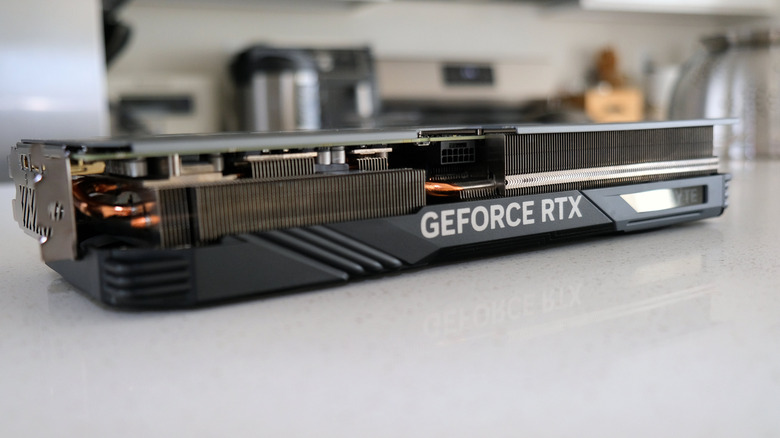Gigabyte GeForce RTX 4070 Ti Gaming OC 12G Review: Big GPU, Giant Price
- Large heatsink keeps it cool
- Silent even under load
- Beats comparable previous-gen cards
- Consistent performance at high resolutions
- 12VHPWR plug is awkward to use
- Needs a large case
We may receive a commission on purchases made from links.
Nvidia released its RTX 4000 series graphics cards towards the end of 2022, with the GeForce RTX 4090 and RTX 4080. These graphics cards, based on the Ada Lovelace architecture, promise large performance boosts generation-over-generation in specific games. The GeForce RTX 4080 was supposed to launch in two versions, one that costs $899 with 12GB of graphics memory and one that costs $1,199 with 16GB of graphics memory.
Just before the market release, Nvidia decided to pull the release of the RTX 4080 model with 12GB of VRAM after PC enthusiasts pointed out that the graphics memory wasn't the only difference in specifications, with differing CUDA core counts, a lower memory interface (192-bit compared to 256-bit), and a lower power draw. Nvidia announced that the "RTX 4080 12GB is a fantastic graphics card, but it's not named right."
Now Nvidia has rebranded that card to the GeForce RTX 4070 Ti. The same 12GB of graphics memory as the ill-fated RTX 4080 12GB, the same core specifications, but with a nice surprise — a price that starts from $799, a full $100 lower than the earlier plans.
We've got one on the testbench: the Gigabyte GeForce RTX 4070Ti Gaming OC 12G. This graphics card costs $899.99, with a mild factory overclock and a large cooling solution with three axial fans. It directly competes with the AMD Radeon RX 7900 XT at that price. Let's dive into how the performance differs between the two graphics cards and the last generation of Nvidia's RTX cards. Gigabyte sent us this graphics card for the purpose of this review.
Hardware specifications
The Nvidia GeForce RTX 4070 Ti features 7,680 CUDA cores, 60 streaming multiprocessors (SMs), and a peak precision compute performance of 40.1 TFLOPs. That's about three and a half Xbox Series X consoles, which have a GPU based on AMD's RDNA 2 architecture with 12 TFLOPs of compute performance. The graphics chip also has 240 Tensor cores, 60 Ray Tracing cores, 80 ROPs, and 240 TMUs. That's roughly half of the on-paper performance of the flagship GeForce RTX 4090 graphics card.
The graphics card also has 12GB of GDRR6X memory, a 192-bit bus width, and a 12 Gbps memory clock. The reference cards have a base clock of 2.31 GHz and a boost clock of 2.61 GHz, but on the GeForce RTX 4070 Ti Gaming OC, Gigabyte has extended that boost clock to 2.64 GHz.
The GeForce RTX 4070Ti has a 285W total power consumption, and Gigabyte recommends at least a 750W PSU. The card uses the new PCIe 5.0 16-pin power connector, which can supply up to 600W. On this card, this power connector only has to supply a maximum of 300W and comes with a 16-pin to dual PCIe 8-pin adapter for those users who don't have a newer PSU with the native 16-pin connector.
Chip Architecture
The GeForce RTX 4070Ti uses the AD104 GPU chip, built on the Ada Lovelace architecture. This chip is only found in this model so far, with the GeForce RTX 4080 using the AD103 GPU chip and the GeForce RTX 4090 using the AD102 chip.
That was a large part of the confusion when it was first launched as the GeForce RTX 4080 12GB – that it wasn't using the same chip as the 16GB version of that card, so it should have a different model number. Nvidia agreed, eventually, and now we have the card before us.
It is built on TSMC's 4nm process, which is significantly more efficient than the Samsung 8nm process on which Ampere, the GeForce RTX 3000 series, was built. That translates to faster clock speeds and better energy efficiency for the graphics core. The GeForce RTX 4070Ti has 35.8 billion transistors packed into a relatively small GPU die.
The GeForce RTX 3070Ti has a base clock of 1.58 GHz and a boost clock of 1.77 GHz. That's almost 1,000 MHz lower than the clocks on the GeForce RTX 4070Ti. It gets those higher clocks while using less power, as the RTX 3070Ti was rated at 290W total power.
Software Features
Nvidia brought more features to the Ada Lovelace architecture to take advantage of the extra performance. Nvidia Deep Learning Super Sampling 3, or DLSS 3 for short, is an in-house developed graphics processing pipeline combining three technologies. Those are DLSS Super Resolution, which first arrived in DLSS 2, Nvidia Reflex, and DLSS Frame Generation, which can create new frames thanks to cutting-edge AI and the RTX Tensor cores.
Nvidia claims that a 4x boost in frame rates can be found in games heavily relying on ray tracing. The claimed boost is lower on games that rely more on CPU, but 2x improvements on frame rates are nothing to sneeze at.
The third-generation Ray Tracing cores in the Ada Lovelace architecture are faster than the previous generations, with Nvidia saying they have 2.8x the peak RT-TFLOP performance. These cores have new hardware units for specialized parts of the ray-tracing workflow, called Micro-Mesh Engines and Opacity Micro-Map Engines.
The RTX 4070Ti also has two NVENC encoders, which can now encode AV1 (previous cards could decode but not encode). That enables better-quality live streaming, as AV1 is more efficient for a given bitrate.
Hardware Design
Nvidia usually makes a Founders Edition when it releases new graphics cards, except on this occasion. All GeForce RTX 4070Ti graphics cards will be third-party cards, and this is from Gigabyte.
The Gigabyte GeForce RTX 4070Ti Gaming OC is a huge graphics card at 336 mm by 140 mm by 58 mm, the largest graphics card we have tested recently — maybe ever. It dwarfs the AMD reference Radeon RX 7900 XT we recently reviewed and can hide our larger GeForce RTX 3070 card in our testing rotation.
That larger size is from the heatsink — which is, roughly, twice the length of the PCB. Gigabyte has put three of its Windforce fans on to help transfer heat away from the heatsink fins, with the middle fan rotating opposite to the outer fans. All three have RGB lighting, which can be controlled from the Gigabyte Control Center software.
If you were hoping that the lower power specifications of this card meant that third-party cards would use the more prevalent 8-pin PCIe power sockets, that isn't to be. We haven't seen a single GeForce RTX 4000 series card not using the 16-pin 12VHPWR PCIe 5.0 socket.
That means a new PSU might soon be necessary with a native cable, but until then, graphics card makers will keep including adapter cables. Gigabyte includes a 16-pin fed by two 8-pin PCIe cables to supply a maximum of 300W. This card has three DisplayPort 1.4 outputs and one HDMI 2.1 output.
PC Installation
Installing the Gigabyte GeForce RTX 4070Ti Gaming OC into our PC was straightforward, but we took extra care as this was our first time using the new 16-pin connector. When the first GeForce RTX 4090 cards with this new connector got into customers' hands, there were scattered reports about the connector melting or, in some cases catching fire. Nvidia investigated and issued a new FAQ page that showed how the new connector could be inserted to have enough connection to power the graphics card but not be fully inserted enough not to cause issues.
The 336mm length of this particular card didn't cause our NZXT H510 case any clearance issues, but it could easily cause issues with smaller mid-towers or smaller cases. The 16-pin adapter has plenty of room to curve gently without putting undue stress on the smaller connector, and was warm to the touch but not overly so.
Synthetic Benchmarks Part 1: Fire Strike, Extreme, Ultra
We started our testing with synthetic benchmarks from UL Solutions, 3DMark, and VRMark. The Gigabyte GeForce RTX 4070Ti Gaming OC is a capable graphics card at all resolutions, with enough grunt to handle smooth 4K gaming.
Fire Strike aims at a 1080p rendering target, with the Gigabyte GeForce RTX 4070Ti Gaming OC scoring 33,957. That's slightly below the 36,145 that the similarly priced AMD Radeon RX 7900 XT scored. It is a decent uplift from last generation's GeForce RTX 3070, which scored 27,067, and the AMD Radeon RX 5700 XT, which scored 23,775. A 25% uplift in raw rendering power is good, and we've only started.
Fire Strike Extreme targets 1440p performance, and the Gigabyte GeForce RTX 4070Ti Gaming OC scores 23,561 here. The GeForce RTX 3070 scoring 15,681 means a 50% increase at 1440p performance. The AMD RX 7900 XT scores 27,227 here, possibly because of the larger VRAM amount of 20GB compared to the 12GB of the GeForce RTX 4070Ti.
For Fire Strike Ultra, which targets a 4K render, the Gigabyte GeForce RTX 4070Ti Gaming OC scored 12,881. That's a 51% increase from the 8,525 the GeForce RTX 3070 posted. The AMD Radeon RX 7900 XT edged things out in this test with a score of 16,587, and the Radeon RX 5700 XT scored 6,822.
Synthetic Benchmarks Part 2: Time Spy, VRMark's Orange Room
The Time Spy benchmarks inside 3DMark were created to test DirectX 12 gaming and to stretch modern graphics cards to their limit. The 1440p target of Time Spy was no problem for the Gigabyte GeForce RTX 4070Ti Gaming OC, with a score of 19,889. That's nearly a 49% increase over the GeForce RTX 3070's score of 13,373. The AMD Radeon RX 7900 XT edged ahead slightly with a score of 21,811, with the Radeon RX 5700 XT scoring 9,990.
In Time Spy Extreme, the DX12 test simulates 4K gaming. The Gigabyte GeForce RTX 4070Ti Gaming OC scores 9,749, a 45% increase over the GeForce RTX 3070's score of 6,678. Again, the Radeon RX 7900 XT was slightly ahead with 11,081, and the Radeon RX 5700 XT brought up the back of the pack with 4,870.
VRMark's Orange Room benchmark simulates the gaming load that the Oculus Rift or HTC Vive requires. It shows a representative performance for VR, showing that the graphics cards are powerful enough to give a smooth VR experience.
The Gigabyte GeForce RTX 4070Ti Gaming OC scored 11,824, slightly behind the 11,930 that the GeForce RTX 3070 scored. The Radeon RX 7900 XT scored 11,707, and the Radeon RX 5700 XT scored 10,810.
It's worth noting that synthetic benchmarks don't necessarily indicate performance in game titles. They enable a way of comparing differing architectures and manufacturers across multiple generations of graphics cards.
Gaming benchmark: Microsoft Flight Simulator
Microsoft's 2020 "Flight Simulator" release is designed to push the highest-end computer components to their limits. This game uses real-life scans of actual airplane hardware for the craft in which you fly as well as what's effectively a map of the whole world, via Bing Maps.
The Gigabyte GeForce RTX 4070Ti Gaming OC held its own with the other cards in this test. At 1080p, it managed 62 fps on average. Cranking the resolution up to 4K gave a smooth 60 fps average, and at 1440p, it dipped slightly to 59 fps. Very similar results to the Radeon RX 7900 XT, which averaged 70 fps at 1080p, 60 fps at 1440p, and 60 fps at 4K.
The AMD RX 5700 XT managed 28 fps at 4K, 51 fps at 1440p, and 59 fps at 1080p. Last generation's GeForce RTX 3070 averaged only 38 fps at 4K, with better performance at 1440p with 63 fps and 60 fps at 1080p.
Gaming benchmark: Death Stranding
"Death Stranding" does support DLSS 2.0 upscaling and AMD's FidelityFX CAS upscaling and sharpening technology. We opted to keep both of these off to compare pure rendering performance. We want to add upscaling into our testing but are working out how to keep testing consistently between generations.
The Gigabyte GeForce RTX 4070Ti Gaming OC averaged 148 fps at 1080p, 149 fps at 1440p, and 135 fps when the resolution was increased to 4K. That's smooth gaming, even at 4K. The Radeon RX 7900 XT averaged 135 fps at 1080p, 143 fps at 1440p, and 147 fps at 4K, just edging ahead at the higher resolution, likely due to its higher VRAM amount of 20GB.
The GeForce RTX 3070 averaged 141 fps at 1080p, 129 fps at 1440p, and 83 fps at 4K. AMD's aging Radeon RX 5700 XT also managed decent framerates here, with 138 fps at 1080p, 119 fps at 1440p, and 67 fps at 4K.
Gaming benchmark: Crysis Remastered
"Crysis Remastered" is still every bit the ultimate test in system power as the reworked version of the 2007 game that created the "Yeah, but can it play Crysis?" meme. Played at high settings, the remastered version was almost too much for the Radeon RX 5700 XT. It managed 64 fps at 1080p, 42 fps at 1440p, and 30 fps at 4K. The Gigabyte GeForce RTX 4070Ti Gaming OC fared much better with 152 fps at 1080p, 144 fps at 1440p, and 93 fps at 4k.
That's the highest 4K score we've seen yet, with the Radeon RX 7900 XT coming a close second with 81 fps at that resolution. The Radeon RX 7900 XT scored 140 fps at 1440p and 167 fps at 1080p. The last generation's GeForce RTX 3070 managed 144 fps at 1080p, 85 fps at 1440p, and 53 fps at 4K. That's a 75% increase in frame rate at 4K in this title, an impressive feat.
Gaming benchmark: DOOM Eternal
iD Software knows a thing or two about optimized titles as one of the longest-running game developers in the market. "DOOM Eternal" takes advantage of the low-level Vulkan API to get every ounce of speed out of your hardware.
The Gigabyte GeForce RTX 4070Ti Gaming OC took every pixel it was fed and spat out glorious, fluid gameplay. It averaged 381 fps at 1080p, 248 fps at 1440p, and 197 fps at 4K.
That's not to say that "DOOM Eternal" was any less fluid on the other three graphics cards in the test. The Radeon RX 7900 XT had similar numbers, with 404 fps at 1080p, 400 fps at 1440p, and 196 fps at 4K. We're not quite sure why the large gap at 1440p occurred; perhaps the larger VRAM of AMD's card came through, or it could be that the Vulkan API is better suited for AMD's architectures.
The GeForce RTX 3070 averaged 392 fps at 1080p, 244 fps at 1440p, and 135 fps at 4K. The Radeon RX 5700 XT brought up the rear, with 289 fps at 1080p, 182 fps at 1440p, and 93 fps at 4K.
Gaming benchmark: Shadow of the Tomb Raider
"Shadow of the Tomb Raider" has pretty much everything you could wish from a Tomb Raider game, backed with high-resolution textures, detailed locations, and realistic shadows.
It also came with a fully-featured in-game benchmark, perfect for testing out graphical combinations with a preset trio of locations. Gigabyte's GeForce RTX 4070Ti Gaming OC averaged 148 fps at 1080p resolution. When increased to 1440p resolution, it only dropped slightly to 146 fps. At 4K, the graphics card averaged 115 fps, plenty of frames for smooth 4K gaming.
The Radeon RX 7900 XT averaged 160 fps at 1080p, 156 fps at 1440p, and 130 fps at 4K. The Radeon RX 5700 XT managed 121 fps at 1080p, 96 fps at 1440p, and 50 at 4K.
Perhaps the more interesting comparison is versus the GeForce RTX 3070. That card averaged 151 fps at 1080p, 131 fps at 1440p, and 77 fps at 4K. That's a 49% increase at the highest resolution, showing again how the current generation of graphics cards is built to perform at higher resolutions than any prior release.
Price and Release
The Nvidia GeForce RTX 4070Ti was released on January 5, 2023. Nvidia's price for the graphics card was $799.99, but as it didn't make any Founder's Edition cards, the eventual pricing was left down to the third-party board partners.
The card, as reviewed, the Gigabyte GeForce RTX 4070Ti Gaming OC, retails for $899.99. That puts it directly in competition with AMD's Radeon RX 7900 XT, which also retails for $899. That pricing makes things tricky for recommendations.
On the one hand, the AMD graphics card has higher VRAM at 20 GB versus 12 GB. It also performs slightly better on most games and benchmarks.
The edge that the Gigabyte GeForce RTX 4070Ti Gaming OC has in its feature set could make it a more attractive purchase for some users. Nvidia's RTX technology for ray tracing is worth using if you play the games that utilize it. The same goes for DLSS 3, which can boost frame rates at higher resolutions to make previously unplayable games smoother. Nvidia's encoders are also more user-friendly than those from AMD, an important consideration if planning to live stream or record your gameplay.
Conclusions
The Gigabyte GeForce RTX 4070Ti Gaming OC is a high-performing graphics card with a slightly-less-premium price tag compared to the other two graphics cards released by Nvidia this generation. The graphics card handles 4K gaming at more-than-playable frame rates, and the 12 GB of VRAM doesn't seem to affect frame rates as much as we thought it would.
That makes it another 4K capable graphics card from this generation, joining the similarly-priced AMD Radeon RX 7900 XT as one we would recommend for the price. As we said in the review for the AMD card, the age of true 4K gaming has arrived without the compromises in graphical quality that previous efforts necessitated.
The $899.99 price tag does mean that it is still in the realm of gamers with disposable income or those who don't mind paying for good performance but were hesitant or unwilling to pay the three-figure prices for the GeForce RTX 4080 or RTX 4090. The stock situation seems to be different also, with in-stock GeForce RTX 4070 Ti models available on store shelves without waiting lists.
This graphics card's performance has excited me for what the next release cycle will bring — mid-tier graphics cards that will perform at high frame rates at 1440p and perhaps smooth 4K gaming at 60 fps, the current high tide mark for an enjoyable 4K gaming experience.
